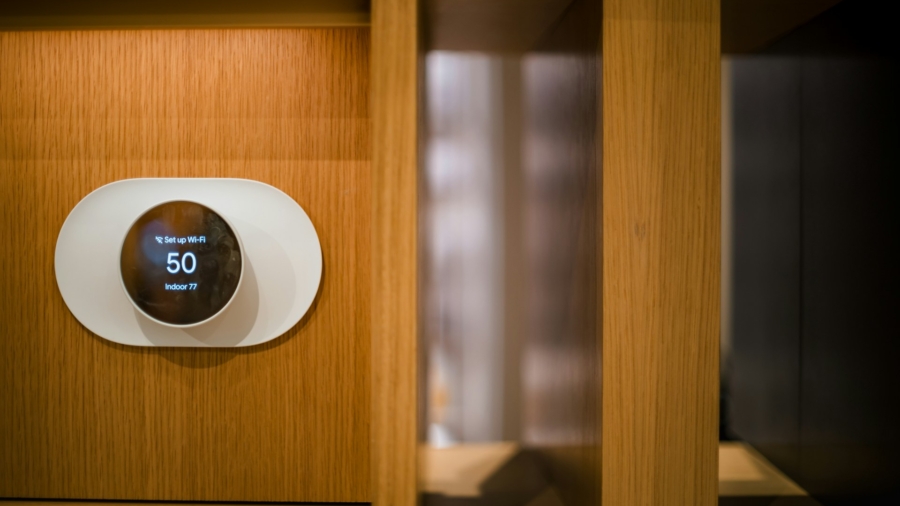Walking into a perfectly climate-controlled home after a long day feels like pure luxury. Yet millions of homeowners still rely on outdated thermostats that waste energy, drive up utility bills, and fail to maintain consistent comfort levels throughout their homes.
The traditional thermostat—that beige box with basic temperature controls—represents 20th-century thinking applied to 21st-century living. While these devices served their purpose for decades, they lack the intelligence and efficiency that modern homes demand.
Smart thermostats have emerged as one of the most impactful HVAC upgrades available to homeowners today. These connected devices don’t just regulate temperature; they learn your habits, optimize energy usage, and integrate seamlessly with your lifestyle. The result is enhanced home comfort paired with significant cost savings.
This comprehensive guide explores the tangible benefits of upgrading to a smart thermostat, from immediate energy savings to long-term health improvements. Whether you’re planning a complete HVAC system overhaul or seeking targeted improvements to your current setup, understanding these advantages will help you make an informed decision about your home’s climate control future.
Substantial Energy Savings and Lower Utility Bills
Smart thermostats deliver measurable energy savings that traditional models simply cannot match. These devices use advanced algorithms to optimize heating and cooling cycles based on occupancy patterns, weather forecasts, and your personal preferences.
The Environmental Protection Agency estimates that homeowners can save up to 23% on heating and cooling costs by upgrading to an ENERGY STAR-certified smart thermostat. For the average household spending $1,500 annually on energy bills, this translates to savings of approximately $345 per year.
Intelligent Scheduling Capabilities
Unlike programmable thermostats that require manual scheduling, smart thermostats automatically adjust temperatures based on when you’re home, away, or asleep. This adaptive scheduling ensures you’re not heating or cooling an empty house while maintaining comfort when you need it most.
Many models feature geofencing technology that detects when you’re approaching home and begins adjusting the temperature accordingly. This prevents the energy waste associated with maintaining constant temperatures during extended absences.
Real-Time Usage Monitoring
Smart thermostats provide detailed energy usage reports that help identify consumption patterns and optimization opportunities. These insights enable homeowners to make informed decisions about their heating and cooling habits, leading to additional savings over time.
Enhanced Comfort Through Precise Climate Control
Traditional thermostats operate on simple temperature thresholds, creating uncomfortable temperature swings throughout the day. Smart thermostats employ sophisticated sensors and learning algorithms to maintain more consistent temperatures while accounting for factors like humidity, outdoor weather conditions, and seasonal changes.
Multi-Zone Temperature Management
Many smart thermostats integrate with zoned HVAC systems to provide customized comfort in different areas of your home. This capability is particularly valuable in larger homes or those with varying sun exposure throughout the day.
Humidity Control Integration
Advanced smart thermostats can coordinate with humidification and dehumidification systems to maintain optimal indoor air quality. Proper humidity levels not only improve comfort but also protect furniture, flooring, and other household items from moisture-related damage.
Remote Access and Convenience Features
Smart thermostats transform climate control from a manual, location-dependent task into a seamless, connected experience. Most models offer comprehensive mobile apps that enable full thermostat control from anywhere with an internet connection.
Voice Control Integration
Popular smart thermostats integrate with voice assistants like Amazon Alexa, Google Assistant, and Apple HomeKit. This hands-free control proves especially valuable when your hands are full or you’re settling into bed and realize the temperature needs adjustment.
Vacation and Travel Modes
Extended absences become more manageable with smart thermostats that offer specialized vacation modes. These features maintain minimal energy usage while ensuring your home remains within safe temperature ranges to prevent issues like frozen pipes or excessive humidity buildup.
Long-Term Health and Indoor Air Quality Benefits
Smart thermostats contribute to better indoor air quality through improved HVAC system management and integration with air purification systems. Consistent temperatures and humidity levels create environments that are less conducive to mold growth, dust mite proliferation, and other indoor air quality issues.
Filter Monitoring and Maintenance Alerts
Many smart thermostats track HVAC system runtime and send notifications when air filters need replacement. Clean filters improve air quality while ensuring your heating and cooling system operates at peak efficiency.
Integration with Air Quality Sensors
Advanced smart thermostat systems can coordinate with indoor air quality monitors to automatically adjust ventilation and filtration based on detected pollutants, allergens, or volatile organic compounds.
Professional Installation Considerations
While some homeowners attempt DIY smart thermostat installation, professional installation ensures optimal performance and prevents potential issues with existing HVAC systems. Experienced furnace installers near me can assess your current system compatibility and recommend the best smart thermostat options for your specific setup.
Compatibility Assessment
Professional installers evaluate your existing HVAC equipment to ensure smart thermostat compatibility. This assessment includes checking wiring configurations, system voltage requirements, and integration capabilities with any existing home automation systems.
Proper Configuration and Setup
Professional installation includes complete system configuration, Wi-Fi network setup, and integration with any existing smart home platforms. This comprehensive approach ensures you can immediately begin enjoying all available features without troubleshooting connectivity or configuration issues.
Smart Thermostat Selection Criteria
Choosing the right smart thermostat depends on your specific home configuration, existing HVAC equipment, and desired features. Consider factors like compatibility with your current system, desired smart home integrations, and budget constraints.
Essential Features to Evaluate
Look for models that offer learning capabilities, energy usage reporting, mobile app control, and integration with popular smart home platforms. Some thermostats also provide advanced features like room sensors for enhanced comfort control and air quality monitoring capabilities.
Brand Reliability and Support
Select smart thermostats from established manufacturers that offer comprehensive warranties and responsive customer support. These devices represent long-term investments in your home comfort system, making reliability and support crucial considerations.
Transform Your Home’s Climate Control System
Smart thermostats represent a practical and impactful upgrade that delivers immediate benefits while supporting long-term home efficiency goals. The combination of energy savings, enhanced comfort, and convenient control features makes this HVAC upgrade one of the most cost-effective home improvements available.
Start by researching compatible smart thermostat models for your existing HVAC system. Consider consulting with qualified furnace installers near me to ensure professional installation and optimal system integration. With proper selection and installation, your smart thermostat will provide years of improved comfort and energy savings while contributing to a more sustainable home environment.

